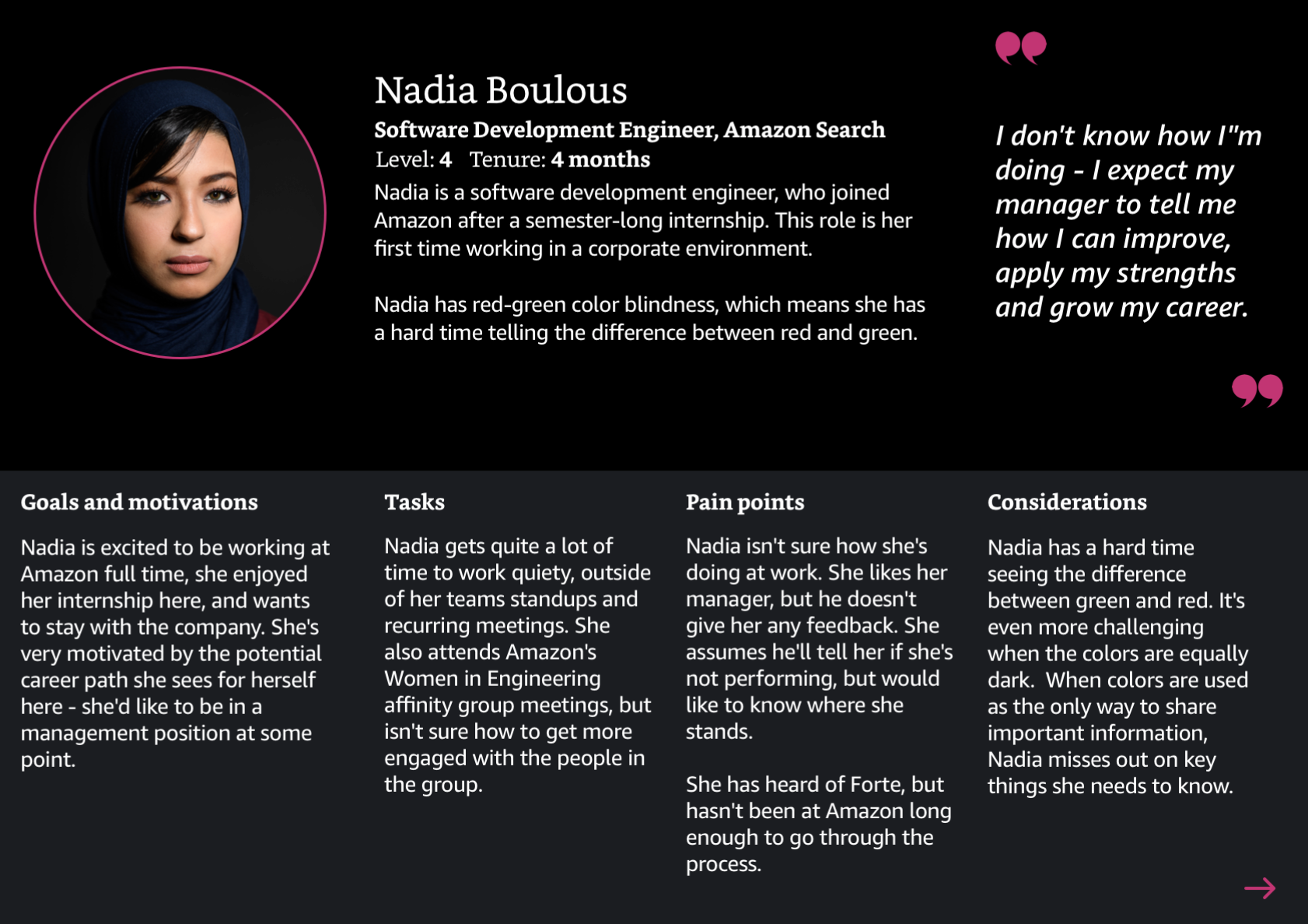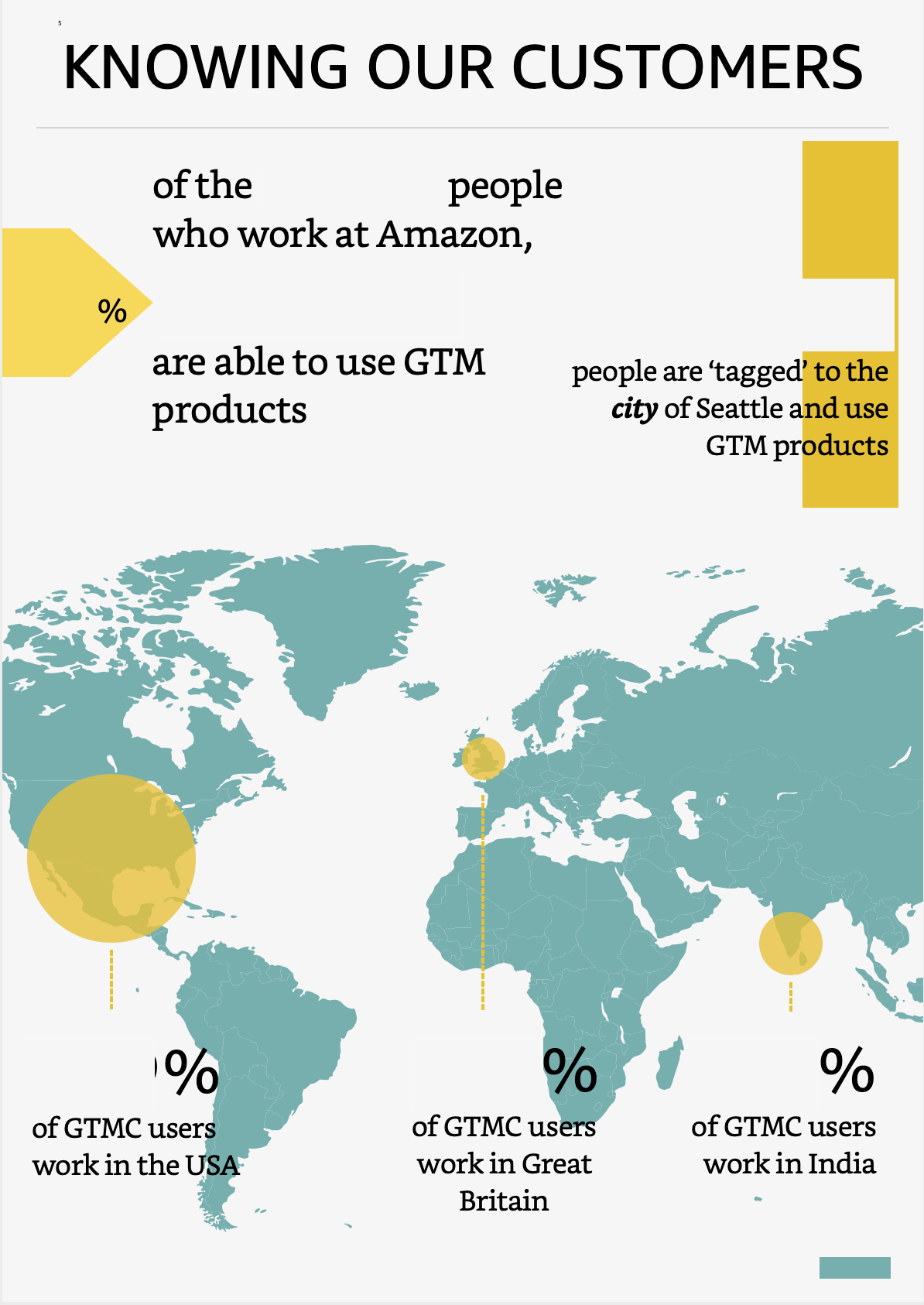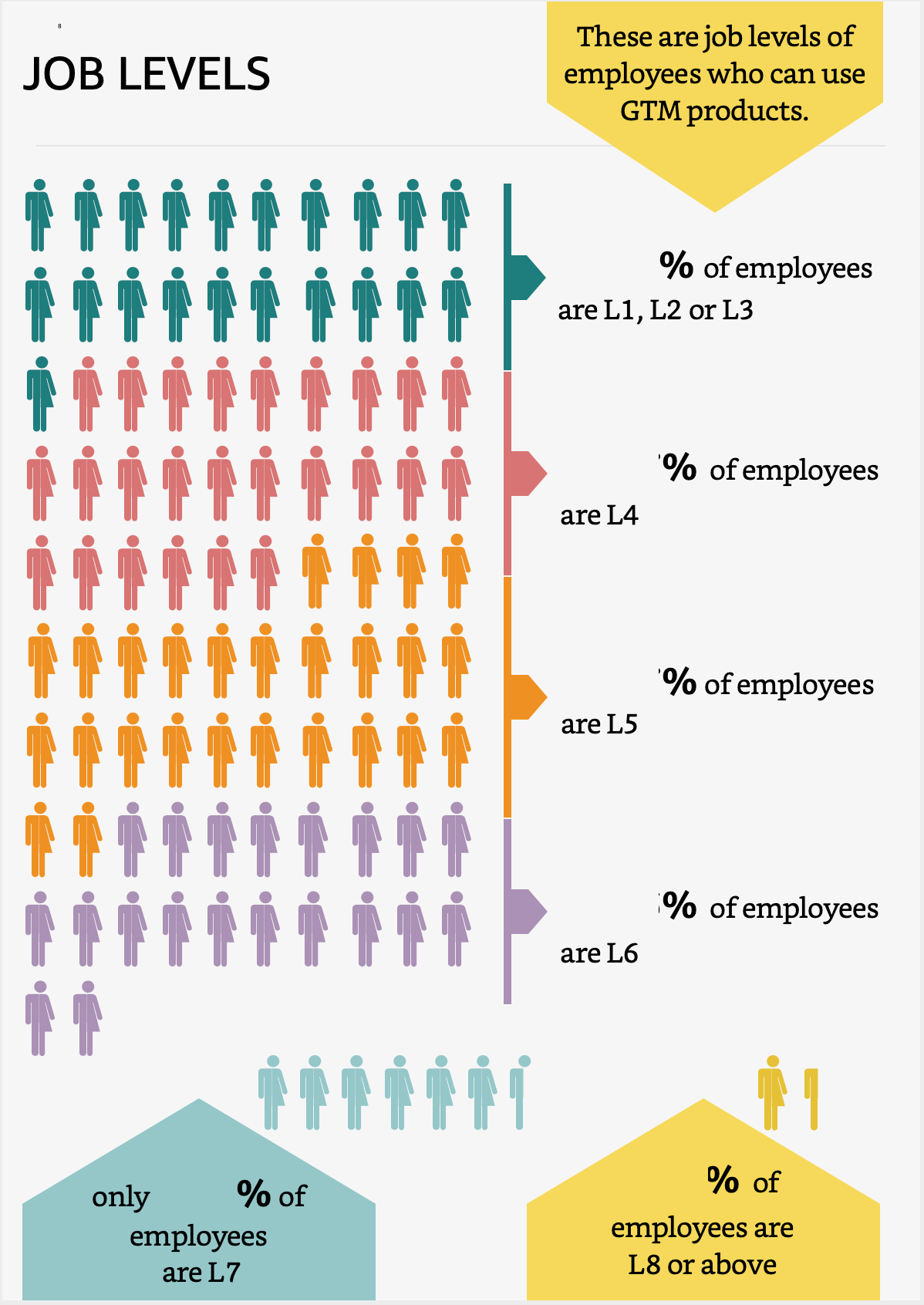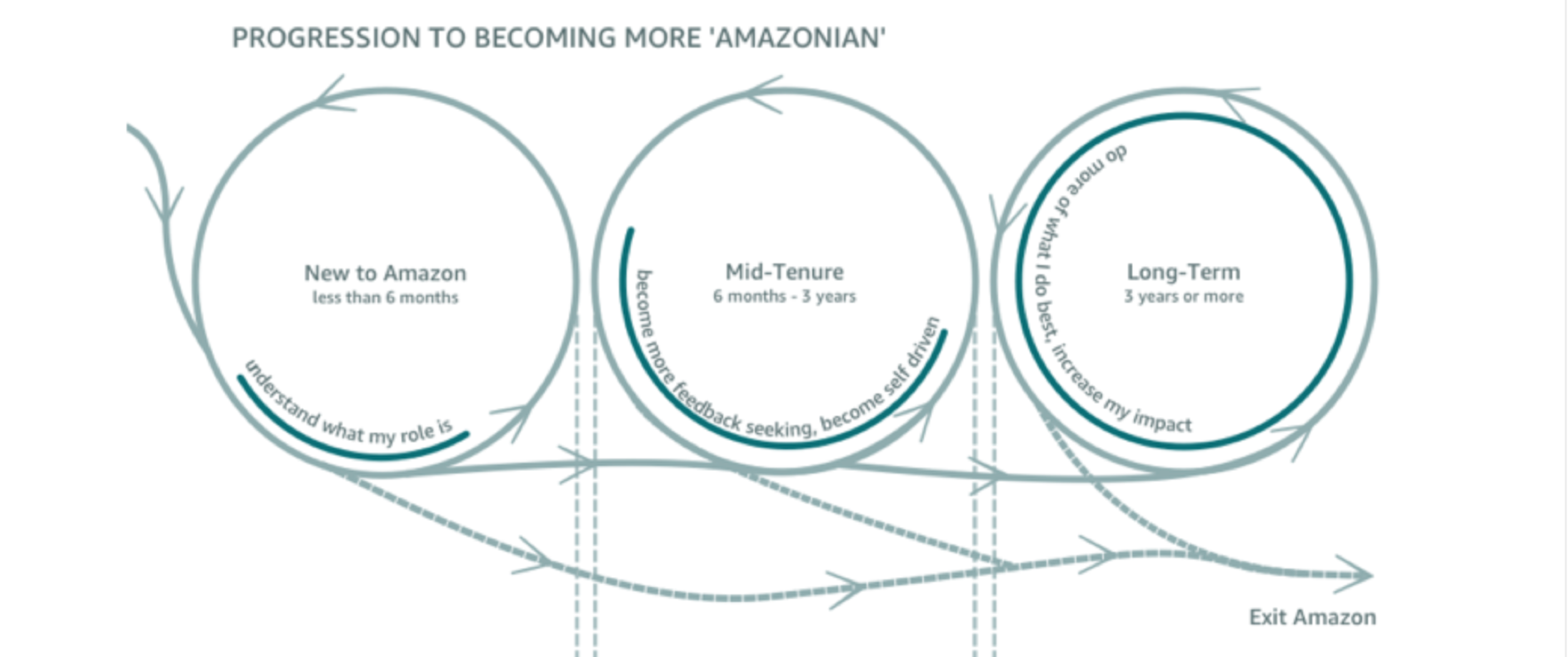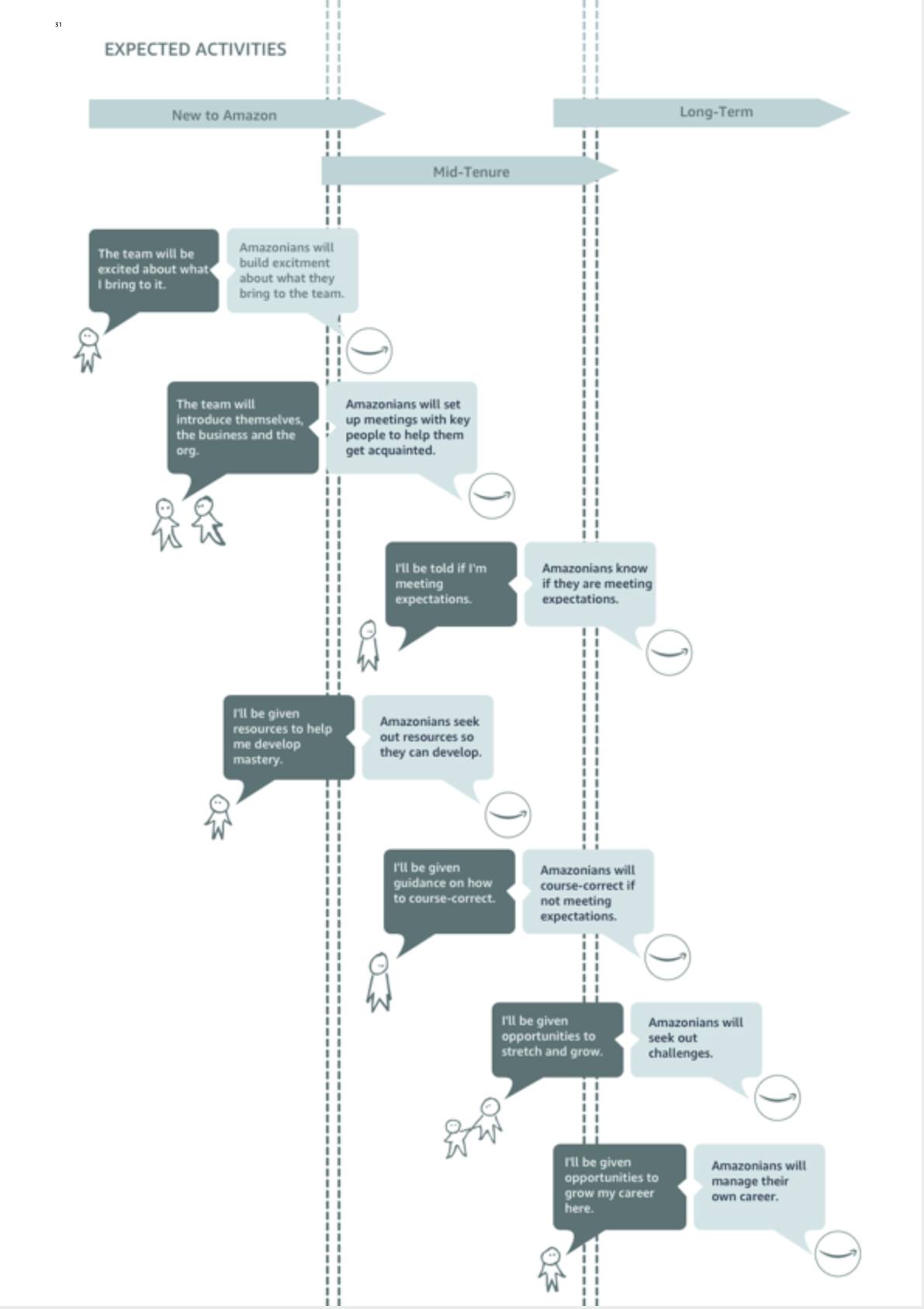Knowing Our Customers | Research Artifacts
As a UX practitioner, my sweet spot is using ethnographic research to deeply understand customer needs, then use that understanding to build an empathy-led strategy that considers the human factors and the business requirements. The following represents the types of artifacts I deliver after research engagements. The team uses these artifacts to develop user stories, for yearly planning and prioritization, or for strategic planning sessions at the executive level to ensure business goals are in line with what customers need.
Much of the specific data in these artifacts is confidential, so has been redacted.
Personas
I don’t always use personas as a tool to emphasize research, but when I first started on this particular team, they were useful in aligning the entire group on who our customers were, and what challenges they were facing day to day. I conducted in-depth interviews, ride along studies, and structured focus groups to gather the information needed to develop personas. Rather than articulate those research findings in documents, I created 5 personas that could be easily understood and remembered by the larger organization.
Accessibility was something the design team was focused on at this point in the organization’s maturity, so all the personas I created included references to the type of assistive technology a person may need to use.
For this project, I created 5 personas in total, and we used them to develop empathy on the team. We also used them in onboarding plans, so whenever a new person joined the larger organization, they were able to quickly understand who are customers were and what problems they faced related to the products we built.
The design team infused the personas across our process - they became the examples that we used in design walkthroughs and presentations, they were the names and faces that we used to design products for, and we considered their needs when designing for accessibility.
Infographics
Like personas, using infographics to depict general information about who is using our products works as means to get new team members up to speed quickly, ground project teams in who is using our products, and helps the team think about where we might want to do additional research. For example, when I started on this team, we weren’t prioritizing localization at all, only offering content in English. After helping the team understand where our users were located and what language they preferred to access information in, I was responsible for running a localization program and our products were translated into 14 different languages.
Emotional States + Expectations
Much of the research work I did for Amazon focused on the employee experience, and ways we could make that experience better. I found a lot of instances where employee expectations and Amazon expectations were not aligned, which led to employee dissatisfaction. These artifacts captured different areas of employee/employer disconnect, which could lead to employee engagement (or disengagement). We used much of this research to inform our forward looking strategic planning documents.
